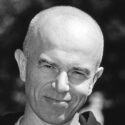Mat Oxley
300 GPs and counting
Last month at Mugello Valentino Rossi contested his 300th Grand Prix. He didn’t win the race but wasn’t far off, finishing third just 2.6sec behind winner Marc Márquez.
The triple-century milestone is quite something in a sport that isn’t always kind to its devotees – and it’s a convenient moment to consider his career. Rossi was a long-haired 16-year-old when he arrived in GPs in April 1996. He is now the grand old man of MotoGP, and yet still irrepressibly enthusiastic about what he does, in spite of the dangers.
It is a given that if you race motorcycles you will get hurt, and probably quite badly at one time or another. During his first decade in the world championship Rossi lived a charmed life, falling off occasionally, like everyone else, but always jumping to his feet with a grin, unlike everyone else. Inevitably there were those in the paddock who wondered how fast he would be if he had to grit his teeth through the agony, like everyone else.
He has answered that question often enough in recent years, most convincingly in 2010 when he returned to action six weeks after breaking a leg and battled for a top-three finish in his comeback race. The following weekend at Laguna Seca he did make it to the podium, crutches and all.
During his spell in hospital with that broken tibia and fibula, Rossi revealed that he has “a good affinity with morphine”. It is difficult to imagine anyone who delights in that cotton-wool-duvet sensation willingly doing battle aboard a 215mph motorcycle, but Rossi bridges the gap, no problem.
Worse than the physical pain, there has been psychological agony. In October 2011 Rossi was involved in the accident that took the life of his great friend Marco Simoncelli. The pair were born and brought up within a few miles of each other and became close friends after Simoncelli graduated to Grands Prix. On that fateful day at Sepang Simoncelli fell immediately in front of Rossi, who was unable to avoid his comrade.
Of much less import, but nonetheless significant, were his two miserable years with Ducati and his disappointing comeback season with Yamaha, during which many wished he would quietly admit defeat and hang up his leathers. People wanted to remember him for the victories and occasionally hilarious celebrations, not for the thrashings suffered at the hands of the new generation.
And yet neither defeat, nor injury, nor emotional turmoil has dimmed Rossi’s enthusiasm for racing. Now wealthy like a Babylonian, the nine-time world champion keeps racing for one very simple reason: he loves it. He enjoys every aspect of the sport, from riding the bike to delving deep into the technical nitty-gritty and from his deluxe gypsy lifestyle to greeting his adoring fans.
Of course, like any great sportsman, Rossi also loves proving people wrong, and he will do whatever it takes to do so. At the end of last season he showed he’s as ruthless as ever by sacking long-time crew chief Jeremy Burgess and replacing him with Silvano Galbusera. Most onlookers deemed this the act of a desperate man, hoping beyond hope to regain the speed of youth. Not so, according to Márquez, who recently observed that Rossi is as brave as a 22-year-old when necessary.
Recklessness and bravery are now lesser elements for Rossi. Like any 30-something racer, experience and guile compensate for the passing of the youthful joy of risk-taking. Working closely with Yamaha, he now has a machine that suits his style better than the factory’s 2013 YZR-M1. Thus at Mugello he was a mere tenth off Márquez’s pace.
Although Rossi may yet win more races, it is unlikely he will surpass Giacomo Agostini’s record for the most GP victories. He is currently 17 wins from beating Ago’s record of 122, across all classes. But he has won more of the races that really matter, with 80 premier-class successes to Ago’s 68, all of them achieved in an era during which he had to fight for every win. Ago often enjoyed a technical advantage and was able to cruise around a lap or two ahead of the pack.
Rossi was put in mind of the importance of premier-class wins by Mick Doohan, the teak-tough Aussie who won five consecutive 500cc world titles during the 1990s. When Rossi won his 28th premier-class success in 2003, to add to his 26 victories in the 125 and 250cc classes, he matched Doohan’s total of 54 500cc wins. Someone was brave, or foolish, enough to ask Doohan what he thought of the young Italian matching his achievement. Eyes burning with disdain, Doohan said, “In F1 they don’t count F3000.”
❖
MotoGP will have its biggest regulatory shake-up in years at the end of next season. From 2016 the class will switch to a control ECU, a new brand of control tyre and probably an rpm limit.
The main goal is to reduce performance, because the 1000s are getting too fast for many circuits. At Mugello last month Andrea Iannone’s Ducati GP14 hit 217mph. In 2001, the final year of the 500cc two-strokes, the fastest bike at Mugello was Valentino Rossi’s Honda NSR500 at 196mph.
Dorna is expected to impose a 15,500rpm limit, which should drop revs by at least 1500rpm. The control ECU will be less hi-tech than current factory systems and won’t feature corner-by-corner tuning.
MotoGP’s new tyre supplier will be Michelin, the company that dominated motorcycle GP racing from the late 1970s until 2007, when Bridgestone won its first world title.

